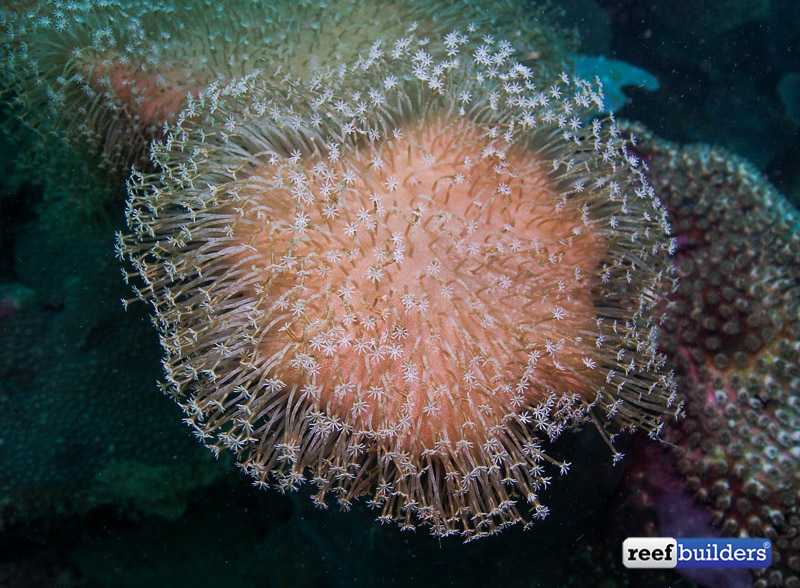Leather corals are a group of soft coral which includes the genus Sarcophyton, Lobophytum and Sinularia. Leather corals are easy to care for and a great addition to any tank, and within these groups, there are several species of leather corals which come in a variety of colors, shapes, and sizes.
These hardy corals are known as leather corals because they have a hard “leathery” body and branches. The three leather coral genera are most commonly known as Toadstool leather (Sarcophyton), Devil’s Hand leather (Lobophytum) and finger leathers (Sinularia).

Toadstool leathers (Sarcophyton) and Devil’s Hand leathers (Lobophytum) are more closely related to each other than Sinularia since they have ‘dimorphic’ polyps. This means the leathers have two sets of polyps, one large prominent polyp which extends from the crown or ‘capitulum’, and very small polyps that stay embedded in the crown of the coral. Sarcophyton especially can have beautiful long flowing polyps while the polyps of Lobophtyum and Sinularia will appear smaller or may not be visible at all.
Both Sarcophyton and Lobophytum can be very similar in appearance, especially as a small frag. You can tell the two apart by looking closer at the edges of the coral and at the finger shaped lobes. In the image below, the Sarcophyton (left) you can still see the underside of the coral where the edges have folded upwards, where as the Lobophytum (right) will have more solid fingers coming from the edges and more importantly, fingers growing from the inside of the coral’s capitulum.

Sinularia is a very widespread, common and diverse genus of soft coral however it does not have the dimorphic polyps like Sarcophyton or Lobophytum. Sinularia has small polyps on the surface of its branches and can actually create a solid base around the bottom of the coral. Sinularia is actually the only reef building soft coral, so naturally, we have a soft spot for this group.
If you have already added leathers to your aquarium with good results, we suggest you also try adding (Capnela, Cladiella, Klyxum and Nepthea) as they are also hardy soft coral species with similar care requirements.

I would like to point out that even though these corals are easy to care for and great for beginners, there is no reason more experienced reefers should keep these elegant corals out of their home aquarium. We absolutely love the new long polyp leather collected on a recent Reef Builders trip to the Solomon Islands and have even set up our very own mini Sarcophyton Solomon reefscape.
Caring for your leather coral is quite simple if your tank is new and this is the very first thing you are adding to your system you will want to make sure to test your water (Alkalinity, Ph, Ca, Mg) to make sure your tank is properly conditioned. Leather corals are very hardy and are more resistant to fluctuating water parameters than advanced SPS or LPS corals, however it is good practice to test your aquarium water before and after adding new corals to your tank.
Once you know your tank levels are stable, in general, you should place leather corals in an area of medium to high light, and medium to high flow. If you are adding the Fiji Yellow Leather Coral (Sarcophyton elegans) to your tank, this vibrant yellow leather prefers more energy in the form of higher flow and stronger light.

Make sure when you place leather corals in a tank to give them lots of space to spread out; remember leather corals will expand and get bigger in a few days after settling into the tank and should grow quickly after that. All the corals in your reef tank should have enough room between them so they don’t touch and irritate each other including leather corals.
Leather corals are a photosynthetic coral and will get most of their energy requirements from photosynthesis. Sinularia, Sarcophyton and Lobophytum leather corals are poor at feeding directly but leather corals instead prefer to extract nutrients from the water column.
One thing to note with your leather corals is they may appear to develop a waxy coating on the top of the coral, where the polyps remain retracted and the surface appears shiny. This waxy coating is normal, more often seen in toadstool and devil’s hand leathers, and these corals usually shed this waxy layer in a few days.



